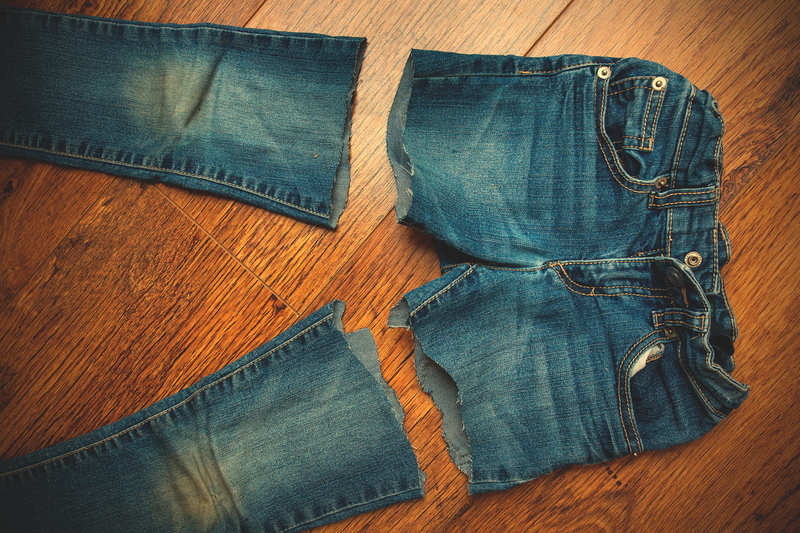Step-by-Step Clutter Removal for Hoarders: Reclaiming Your Space and Mind
Clutter removal for hoarders goes far beyond tidying up; it is a transformative process that has the power to reclaim both living spaces and peace of mind. The journey towards a clutter-free home is often laden with emotional challenges, yet the rewards are profound--a safer, healthier, and more comfortable environment, along with a sense of control and relief. Whether for yourself or a loved one, understanding the step-by-step process for decluttering hoarded spaces is vital for lasting change.

Understanding Hoarding: More Than Just a Mess
Hoarding is a complex condition characterized by an excessive accumulation of items and difficulty discarding them, regardless of their actual value. People struggle to throw possessions away, resulting in overwhelmed spaces that can threaten well-being and safety. Tackling hoarding requires a compassionate and systematic approach, combining practical decluttering strategies with emotional support.
Recognizing the Signs of Hoarding
- Living spaces unusable for their intended purpose (e.g., kitchens full of papers, bathrooms packed with bags)
- Extreme difficulty discarding items
- Strong emotional attachment to objects most consider trivial
- Social isolation due to embarrassment or shame
- Impacts on health and safety within the home
Preparing for Clutter Removal: Setting the Foundation
Before diving into the decluttering process, preparation is essential to ensure success in reclaiming both space and mental wellness. Here are crucial preparatory steps:
1. Seek Emotional Support and Professional Guidance
- Consider reaching out to mental health professionals specializing in hoarding disorders.
- Involve trusted friends or family members who can provide understanding and encouragement.
- If feasible, enlist the help of professional organizers with experience in clutter removal for hoarders.
2. Set Realistic, Achievable Goals
- Start with one room, area, or even a single surface.
- Break large goals into smaller, actionable tasks to prevent overwhelm.
- Write down your goals and post them somewhere visible for continuous motivation.
3. Prepare Necessary Supplies
- Sturdy trash bags for discarding items
- Boxes or bins for sorting "Keep," "Donate," and "Discard" piles
- Cleaning supplies for freshening up emptied spaces
- Protective gloves and masks, especially in homes with dust or mold
Step-by-Step Clutter Removal Process for Hoarding Situations
Embarking on the clutter removal journey for hoarders can be daunting. Use this detailed, step-by-step guide to bring structure and hope to the process:
Step 1: Visualize Your Ideal Space
Take a moment to imagine your home free from clutter. What does each room look like? How do you want to feel in these rejuvenated spaces? This vision will anchor your motivation when the clutter clean-up process gets overwhelming.
Step 2: Start Small--One Area at a Time
- Choose a manageable area, such as a countertop or a corner of a room.
- Focus exclusively on this area without worrying about the rest of the house.
- Set a timer for 30 or 60 minutes to create a sense of urgency and accomplishment.
Tip: Remember, progress over perfection--each small victory adds up!
Step 3: Sort Your Belongings--The Four-Box Method
With designated boxes or bins for Keep, Donate, Discard, and Undecided, sort through each item systematically:
- Keep: Items that are genuinely needed, used, or bring you joy
- Donate: Gently used items that could benefit others
- Discard: Broken, expired, or unusable items
- Undecided: Objects you struggle to let go of--revisit these later
This approach brings clarity and structure, minimizing indecision and frustration.
Step 4: Handle Donations and Trash Promptly
- Immediately bag and remove trash from the home to prevent second-guessing.
- Schedule donation pick-ups or drop-offs promptly to free up space and reduce backsliding.
- If dealing with hazardous materials (batteries, chemicals, etc.), dispose of them at local collection centers following local guidelines.
Step 5: Deep Clean and Organize
- Once an area is decluttered, thoroughly clean it using appropriate cleaning products.
- Reorganize items you decided to keep, using storage solutions if needed.
- Label containers to maintain order and make finding items easier in the future.
*Developing a system for ongoing organization is as important as the initial clean-up!*
Step 6: Repeat and Celebrate Progress
- Move to the next area on your list.
- Celebrate every completed space, no matter how small--it's a step towards a clutter-free home and mind.
- Consider taking before-and-after photos to visually document your achievements.
Step 7: Address Emotional Attachments
Hoarding is often tied to difficult emotions or trauma. Acknowledge your feelings as you work. If necessary, seek support from therapists who specialize in hoarding disorder, as well as support groups where others understand your struggles.
Maintaining a Clutter-Free Home: Sustainable Habits
Once you've tackled the initial clutter clean-up, maintaining an orderly home requires ongoing effort and new habits. Here are some helpful tips:
- Adopt a "One-In, One-Out" Rule: For every new item brought home, let something else go.
- Schedule Regular Decluttering Sessions: Weekly or monthly maintenance helps prevent clutter from returning.
- Don't Be Afraid to Ask for Help: Family, friends, or support groups can motivate and assist you in maintaining a clutter-free environment.
- Recognize Triggers: Identify what prompts you to accumulate items (stress, anxiety, sentimentality), and develop alternative coping mechanisms.
- Reward Yourself: Celebrate milestones--big and small--to sustain motivation and positive self-esteem.
The Psychological Benefits of a Decluttered Home
Decluttered spaces lead to measurable improvements in mental and physical health. Here's how:
- Reduced Anxiety and Stress: A tidy, organized home often results in a calmer mind and improved mood.
- Improved Safety: Removal of clutter reduces the risk of falls, fire hazards, and pests.
- Better Social Life: People feel more comfortable inviting friends and family over, reducing loneliness and isolation.
- Enhanced Productivity: Clean, open spaces allow for better focus and efficiency at home or in a home office.
Reclaiming your space is about more than aesthetics--it's a powerful step towards emotional healing, personal freedom, and self-empowerment.
Common Obstacles in Hoarder Cleanup--and How to Overcome Them
Overwhelm and Procrastination
- Break tasks into even smaller steps.
- Set a timer for short work sessions (15-30 minutes).
- Enlist a supportive partner to keep you motivated and accountable.
Guilt About Discarding Items
- Remind yourself that memories aren't in objects--they are in your heart and mind.
- Consider taking photos of sentimental items before letting them go.
- Reframe donating as sharing your abundance with others in need.
Fear of "Needing Something Later"
- Ask yourself if you've needed the item in the past year.
- If not, it's likely safe to let it go and reclaim your precious space.
When to Seek Professional Help for Hoarding Cleanup
Sometimes, DIY decluttering is not enough--especially when:
- There are severe safety or health hazards present (mold, pests, fire risk, blocked exits).
- The situation is overwhelming or causes intense emotional distress.
- You or your loved one has a co-existing mental health condition that complicates the process.
Professional hoarding cleanup services and mental health professionals are trained to handle sensitive situations with dignity and compassion. They also provide crucial follow-up support to prevent relapse.
Resources and Support for Hoarders
- National Alliance on Mental Illness (NAMI): For education and support groups in your area.
- International OCD Foundation: Excellent resources on hoarding disorder.
- Professional Organizers: Search for specialists in clutter removal for hoarders with credentials and experience.
- Therapists and Counselors: Look for those trained in CBT (Cognitive Behavioral Therapy) for hoarding disorder.

Frequently Asked Questions about Clutter Removal for Hoarders
How long does it take to declutter a hoarded home?
Every situation is unique. For severe hoarding, the process could take weeks or months. The key is consistency, patience, and celebrating each small win.
What's the difference between clutter and hoarding?
Clutter refers to a temporary state of disorganization; hoarding disorder involves chronic difficulty discarding possessions, resulting in crowded, unlivable spaces, and significant emotional distress.
Can hoarding ever be completely cured?
While some may achieve long-term change, for others, managing clutter is an ongoing process. Professional support and consistent maintenance are crucial.
Conclusion: Reclaiming Your Space--and Your Life
Clutter removal for hoarders is not simply about cleaning. It's about conquering psychological barriers, restoring safety and comfort, and regaining peace of mind. By following a compassionate, step-by-step approach--preparing, decluttering, organizing, and seeking support--anyone can begin the journey from chaos to calm. Remember: the process is a marathon, not a sprint. Be gentle with yourself, recognize progress, and don't hesitate to reach out for help.
If you're ready to transform your home and mind, take the first step today. Your clutter-free future awaits!